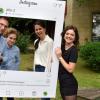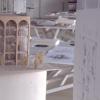Added Value in 3D Printing
2021
Apr
30
The development of 3D printing technology has drastically accelerated in the past decade, that led to the establishment of a research group in 2015 and a 3D Printing and Visualisation Centre in 2016, the achievements of which has increased the international acknowledgment of the University of Pécs. I talked to the leader of the interdisciplinary research, education and development centre, Dr. Péter Maróti about their efforts bordering what we would see in science-fiction movies, and about the challenges in their field of research.

How did the 3D centre develop since its establishment?
The man behind the idea of the centre’s establishment in 2016 was József Bódis, who is currently the Secretary of State for Education, and previous rector of the PTE. Based on his ideas we aimed to introduce an interdisciplinary, innovative technology, which not only helps ongoing research, but also strengthens the ties between the university and economic figures. The secretary brilliantly realised that 3D printing is such a field, and entrusted Prof. Miklós Nyitrai with the project’s development and execution. The centre’s establishment came to fruition with his technical management, thanks to the support of an Economic Development and Innovation Operational Programme, which we won in consortium with the University of Debrecen. The UP’s monetary share of the tender was 1,6 billion forints, this is what allowed us to conduct the 4+1 year project, during which we sourced machinery, established the centre, and supported different university research groups. Thus, the interdisciplinary collaboration of the Medical School, the Faculty of Engineering and Information Technology, the Faculty of Pharmacy, the Faculty of Music and Visual Arts, the Faculty of Sciences and the Faculty of Business and Economics interdisciplinary collaborations began.
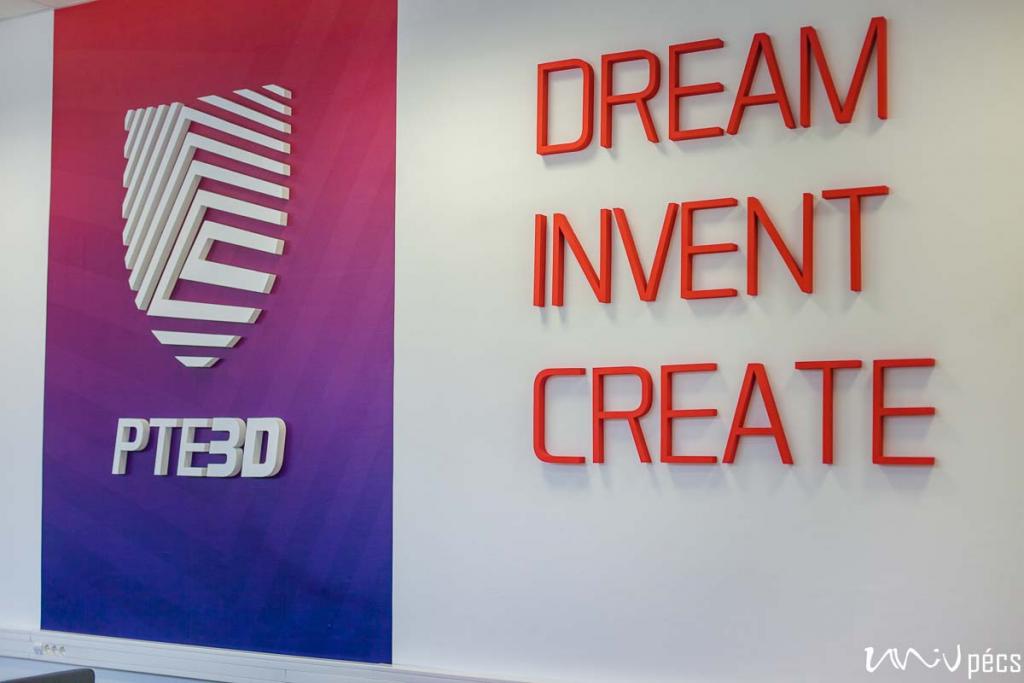
At first, the centre operated like a colourful kaleidoscope, however, we soon realised that we cannot focus on everything, since our resources and the number of groups are finite, we cannot be good at everything. We had to find focus points. Our strongest and most impactful projects were conducted on the periphery between medicine and engineering. Accordingly, in the past period we mainly put the emphasis on the Medical School, the Faculty of Pharmacy and the Faculty of Engineering and Information Technology and the Clinical Centre with significant support from the Faculty of Business and Economics.
The various scientific breakthroughs, publications and PhD thesis defence presentations have made founding new research possible, additionally we were able to support numerous research projects with asset development, supplementary measurements or software development.
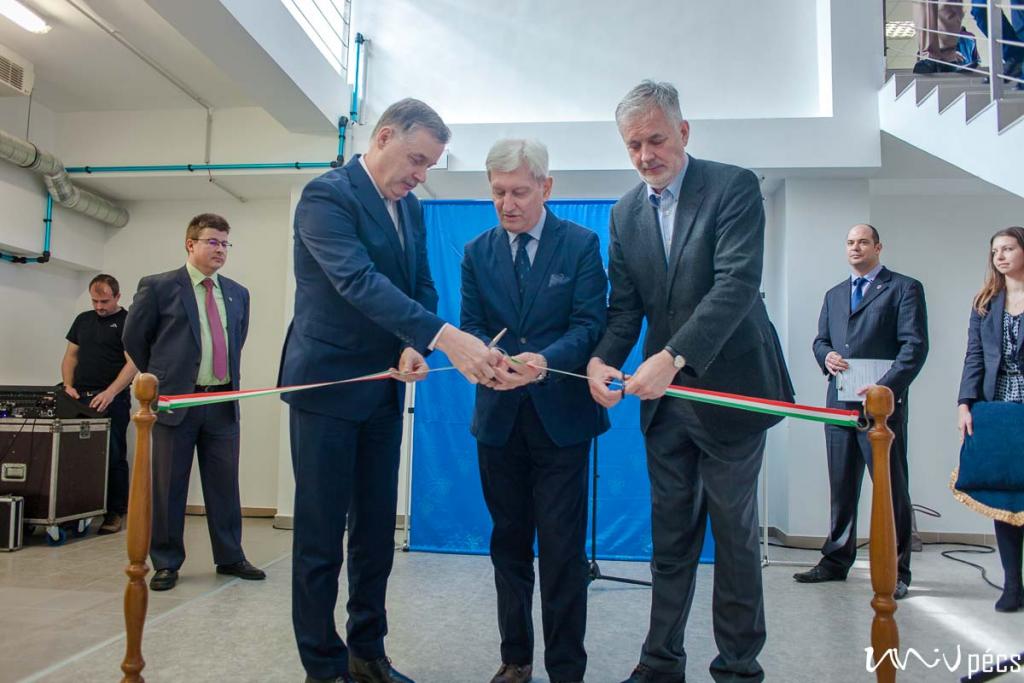
How diverse is the Centre’s current operation?
In accordance with the university mission it is built on three main pillars: first, our colleagues take part in education at the Medical School and the Faculty of Engineering and Information Technology, as well as in biotechnology training. Additionally we take part in talent promotion, we provide help with many Student Research Society (TDK) studies and theses at our laboratory, we are proud of multiple TDK victories and National TDK placements in the past couple of years.
From a scientific point of view 3D printing is considered an independent discipline. We managed to publish studies in multiple international interdisciplinary scientific journals. Moreover, multiple PhD students have successfully defended their theses in this field and we have new PhD students who continue to work in this field.
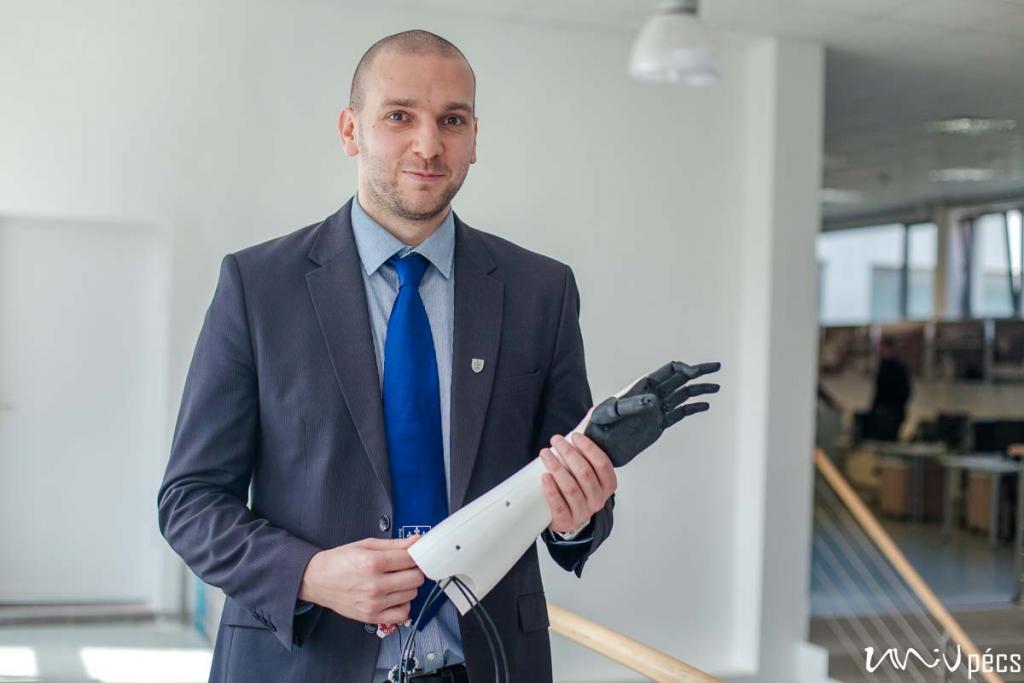
The third pillar is probably the most novel and interesting, that is innovative and service activity.
We aspire to make a profit by completing inside and outside orders. Actively applying for tenders is important as well, this team in collaboration with president Ádám Schiffer have won the Thematic Excellence Programme which brings approximately hundreds of millions of forints to the university annually, including last year, this year and hopefully next year as well. It focuses on the periphery between medicine and engineering, i.e. biomedical engineering. In this field of research, we already have produced more than 15 Q1 rated international publications many of which are D1 level. We recruited almost 20 young researchers with physics, medical engineering, mechanical engineering, computer engineering and engineering design degrees. We contributed to the establishment of two university spin off corporations, in the past couple of years, in 3D printed prosthetics development (EmberArm) and healthcare software development.
How would you describe the activities at the 3D Centre?
It is important to mention that even though we are talking about 3D printing, this concept encompasses much more today.
It is an important manufacturing technology and it is complemented by important supplementary work, which is necessary for the complex design, manufacturing and prototyping processes, like CAD modelling or electronics and software design. We have independent software development projects as well, for example the virtual gallery designed for the Medical School and the Faculty of Engineering, or the scheduling application for resident doctors, but we are involved in multiple web design projects as well.
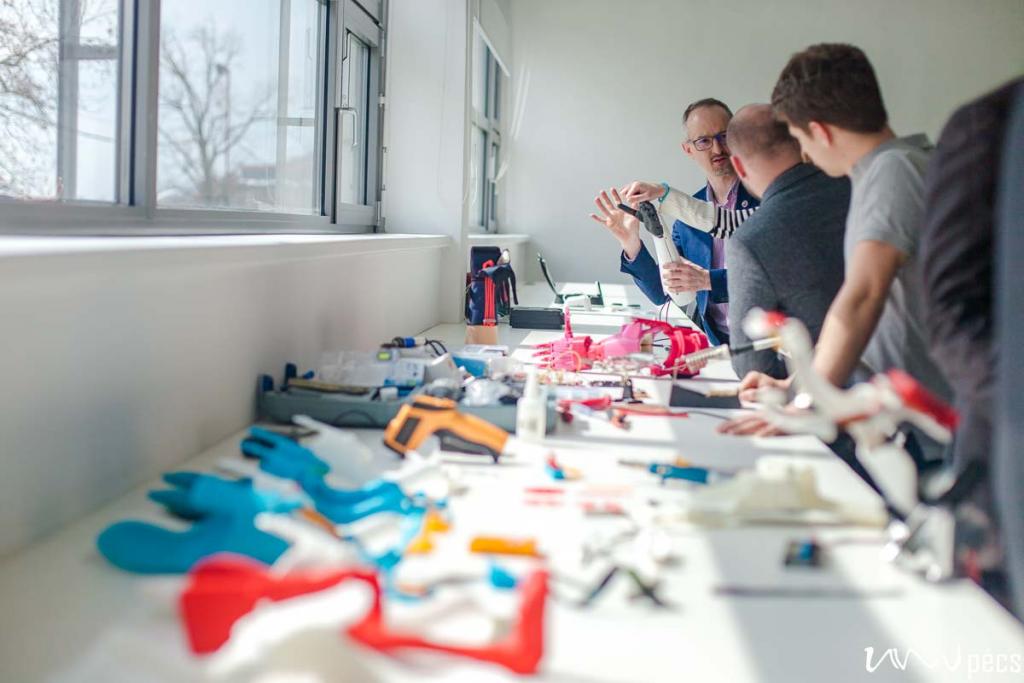
Our material testing laboratory is well equipped even by international standards. It greatly helps research, and it has significant inner and outer service potential as well, we will soon be able to make accredited measurements. We are in close cooperation with the Simulation Education Laboratory of UPMS, and we just established our biomechanics laboratory, where we have complex movement analysis equipment and robotic rehabilitation support equipment like the ReWalk exoskeleton. We are currently in the process of setting up our biomechatronic laboratory, which will serve as the main grounds for our interdisciplinary biomedical engineering training programme with the Faculty of Engineering and Information Technology and the Medical School, starting next year.
How new is this in Hungary or worldwide?
This interdisciplinary scientific field is very young and it develops dynamically. The quality of both the equipment and the work we do is measurable on an international scale, proved by our data, our scientific titles and our publications.
Biologists, doctors, engineers, software engineers and bioengineers are working together in improving our healthcare, in order to create methods, equipment, and machinery that can improve healthcare services, thus directly or indirectly make the lives of patients better.
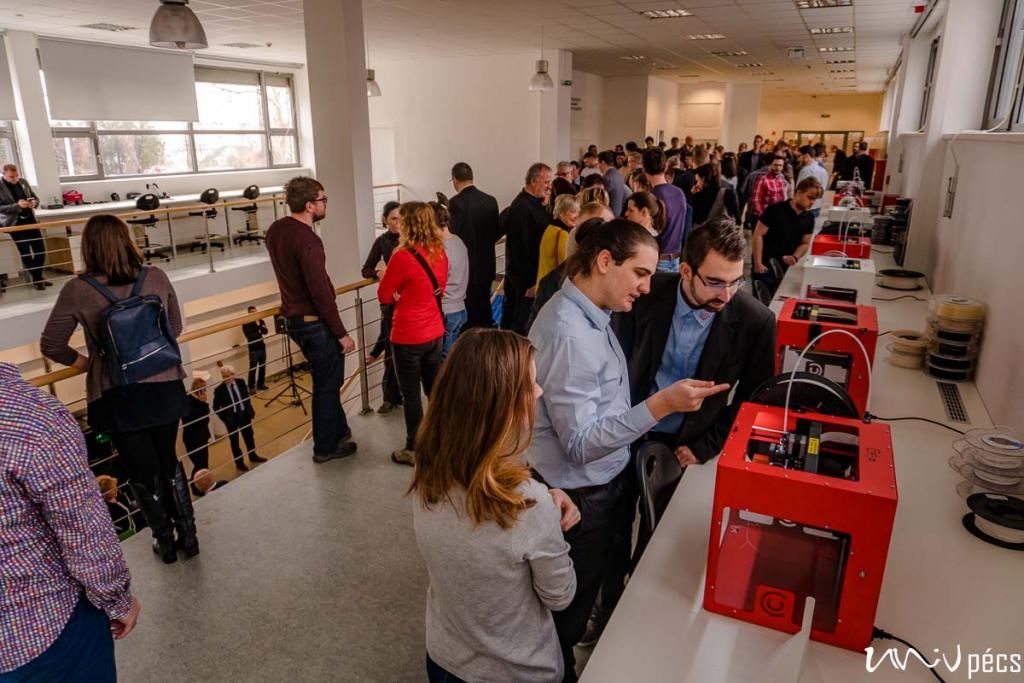
Are there any challenges?
Naturally, since the field is so new, we have to work to embed it internally and externally as well. With our 25 strong performance oriented team we are constantly aspiring to innovate, move forward and see new projects. In this matter I think, the added values brought by our colleagues’ contribution is very important. We have a great leader in the person of the dean as well as my bosses at the UPMS, head our unit, Szilárd Rendeki and Prof. István Kiss both support us completely in our efforts to push the boundaries.
In what direction can this field develop?
At the university my colleagues and I aspire to strengthen these budding projects, consolidate the centre’s role, and create an independent biomedical engineering centre, with the proper professional staff from the UPMS and the Faculty of Engineering and Information Technology, building on our previous achievements, while including new ideas, inspirations and research groups. It is clearly visible how it can achieve results; its tender adsorbing power is rather high.
Our aim is to effectively stimulate internal innovation potential in the field of medicine, health sciences and engineering within the university’s innovation chain, furthermore to establish a bridge between the university and the industry sector.
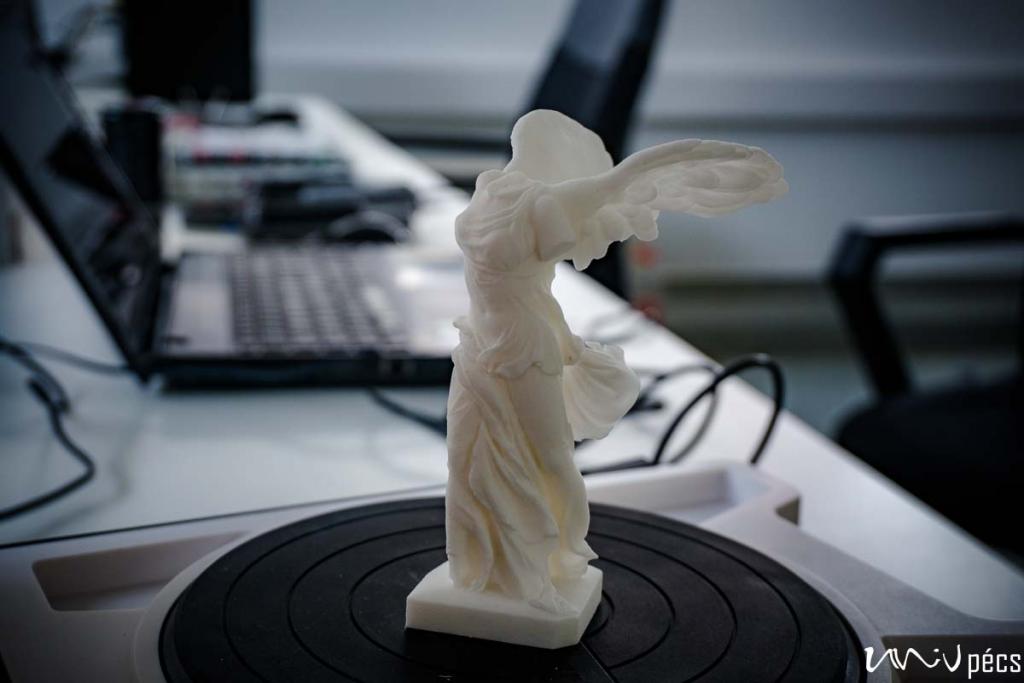
My opinion about the state of the scientific field is that there are significant developments to be expected in the sub-disciplinary fields of biomedical engineering. For example, there is unlimited potential in medical robotics, human machine connection, intelligent material production, and its application, or in AI and AR technologies.
In biotechnology, pharmaceutical industry and technology the common trend is to tend towards unique solutions for which 3D printing is more than suitable. We are working on developing methods, equipment and software that lend themselves to a personalized approach, specified for each disease, thus fully satisfying each participant in the healthcare process, including patients, healthcare staff, hospital management and administration.
Written by: Mariann Tóth
Photo: Szabolcs Csortos
Published in: UnivPécs Science magazine, 2020.
- Log in to post comments
University of Pécs | Chancellery | IT Directorate | Portal group - 2020.

